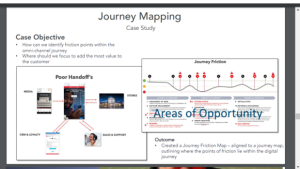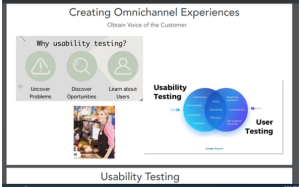Abstract
A case history on an organization’s evolution – from retail to a health and wellness company. Leveraging technology to commercialize and optimize the customer journey, Sleep Number advanced omnichannel digitization to continue meeting the needs of their customers.
Key Take-Aways
- Examples of how Sleep Number utilized digitalization to move into the wellness space (versus retail space)
- Success factors of a vertically integrated organization
- Fresh perspectives on the digital customer journey and how to create omnichannel in person and online/digitally
Building a community around sleep health
Christina Baune, Director of Digital Product, Sleep Number Corporation, recently shared a case history about building a community around sleep health. As she noted, Sleep Number buyers rest on mattresses that can be adjusted creating a “sleep number” that correlates to firmness. Smart technologies measure heart rate, biometrics and movement, and are used to provide daily reports about how well users slept, and how restful or productive sleep was. Monthly health and wellness summaries are also provided. Christina emphasized her company’s customer centric focus and strategy around optimally leveraging technology, solving customer issues, and promoting health and wellness overall.
Sleep Number’s guiding philosophy is based on a foundational belief in individuality and helping their customers stay well. A vertically integrated business model brings more control across the supply chain, which also benefits customers. Christina shared visuals of the evolution of the company’s website, which aligned with the company’s growth and digital offerings, including creating omnichannel customer experiences.
Journey mapping can be a powerful tool
Christina highlighted some of her experiences creating journey maps for a variety of enterprises, and most recently at Sleep Number. She shared this definition of a journey map: A journey map is a visualization of a customer’s objectives, needs, feelings and barriers throughout the path to purchase for a product, service or brand.

Journey mapping is used to better understand customers and their expectations and needs. Christina began a recent journey mapping exercise at Sleep Number by seeking input from her internal strategy team as well as end users and field teams. She visually plotted a holistic customer journey, including a journey friction map. At a basic level, she tried to understand where potential customers were experiencing friction and/or situations that stymied their purchasing journey. Christina noted discrepancies between products available online versus what was available in physical stores. For customers needing to make a big purchase such as a refrigerator or bed, quickly, creating an optimal and aligned online and store experience was key. Ideally, the buying journey should be “reversible” – the customer should be able to easily see and examine the same product online and in person. Their problems should be quickly resolved.
Creating personas and conducting usability testing
Analyzing data helped Christina understand what was happening along the buyer journey, and how to improve the purchasing path. As stated, customers have different journeys and different routes to success need to be offered. A key part of the journey mapping process involved creating both in-store and digital personas, and even a hybrid persona – someone who might browse online but make the purchase at a physical store (or vice versa). Different regions were also segmented. As noted, identifying the most relevant data was important, as there is generally an abundance of available data.

Christina encouraged participants to ask themselves if their organizations were doing enough to understand what customers needed, and to identify pain points. She conducted an informal poll around this question, and the results were 13% yes, 75% no, and 13% not sure, not a very positive result. As her informative session wound down, she discussed the importance of the user experience (UX) and usability testing, i.e., evaluating a product or service by testing it with representative users. Christina ended the event with the following advice:
- Understand the full customer journey you are trying to impact
- Identify the areas that you can start with, that will deliver on the customer experience
- Obtain ongoing user feedback
As customers continue to browse and shop both online and offline, it’s critical to understand the intersection of the two, and align digital and physical experiences. Journey mapping, story mapping and usability testing are three ways to support this. Doing so can help marketers improve their products and services and build their brands.



Recent Comments